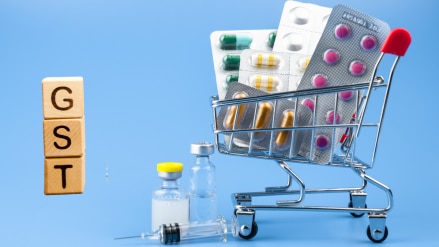The Union government has proposed goods and services tax (GST) rate cuts across 36 drugs and 25 medical devices ahead of the GST council meet, sources said. The rate reduction for drugs fall under two categories wherein GST on three drugs – Agalsidase Beta, Imiglucerase, Eptacog Alfa (Activated) – that are used to treat genetic and blood disorders are proposed to come down from 5% currently to nil.
For 33 other drugs – most of which are used to treat cancer – there’s a proposal to reduce the tax rates from 12% to nil. Industry experts said that move will streamline the GST rates on the critical care therapies and drugs that fall under NLEM (National List of Essential Medicines) category.
Pharma industry flags inverted duty risk
“The taxation of NLEM drugs is currently arbitrary but these are essential drugs that should not attract any tax according to the GST parameters. By proposing zero rates on critical drugs, the patients are going to benefit a lot,” said R.K. Sanghavi, Chairman (nutraceutical committee) at Indian Drug Manufacturers Association (IDMA).
Experts said that drugmakers may not get any relief from the proposed rate cuts since a majority of APIs (active pharmaceutical ingredients) – that are used to produce these formulations – have 18% GST. If the final products are taxed at zero rate, it will worsen the inverted duty structure problem. “The pharma companies are already facing issues of accumulated input tax credit (ITC) which is blocking their working capital and denting the global competitiveness of domestic drugmakers. The GST reduction will exacerbate this issue,” said a pharma analyst.
Medical devices may see tax cut to 5%
Meanwhile, the government has proposed rate cuts on medical devices across two categories. For products like anesthetics, medical grade oxygen, bandages, diagnostic kits, surgical rubber gloves, blood glucose monitoring system, spectacles, breathing appliances, gas masks, and certain types of medicaments, the government has proposed to bring down the rates from 12% to 5%. In the other category which includes thermometers, and instruments used for physical or chemical analysis, the GST rates will likely come down from 18% to 5%.
Rajiv Nath, forum coordinator at Association of Indian Medical Device Industry (AiMeD) said that a flat 5% GST on medical devices needs to be accompanied by lower GST on input raw materials and components to avoid accumulation of GST credit. He said that the rate cuts should be supplemented by reforms. “Since GST aims to tax value addition without reducing competitiveness, we suggest raising the health cess on imports from 5% to 10%, with proceeds funding Ayushman Bharat to counteract cheaper imports. Without bringing in refund reforms, these cuts might create supply risks by discouraging local production” he said.
Some medical device manufacturers have said that the industry will require a reasonable transition time to switch inventory in the supply chain to avoid any persecution on misplaced accounts of profiteering. “It’s not practical to sticker inventory of devices and unused packaging materials with revised MRP and if sales are held up it may create a healthcare supply chain crisis,” said a leading medical device maker.
